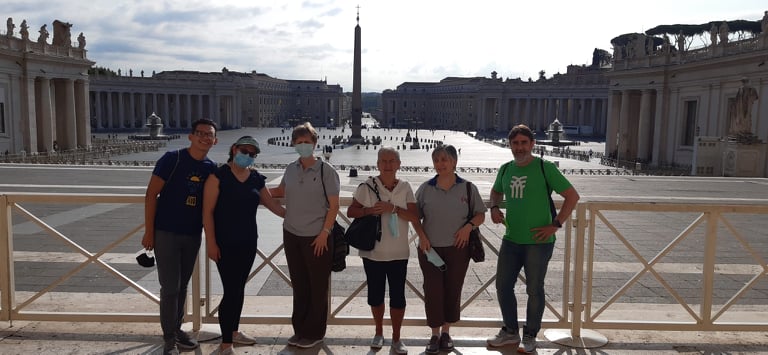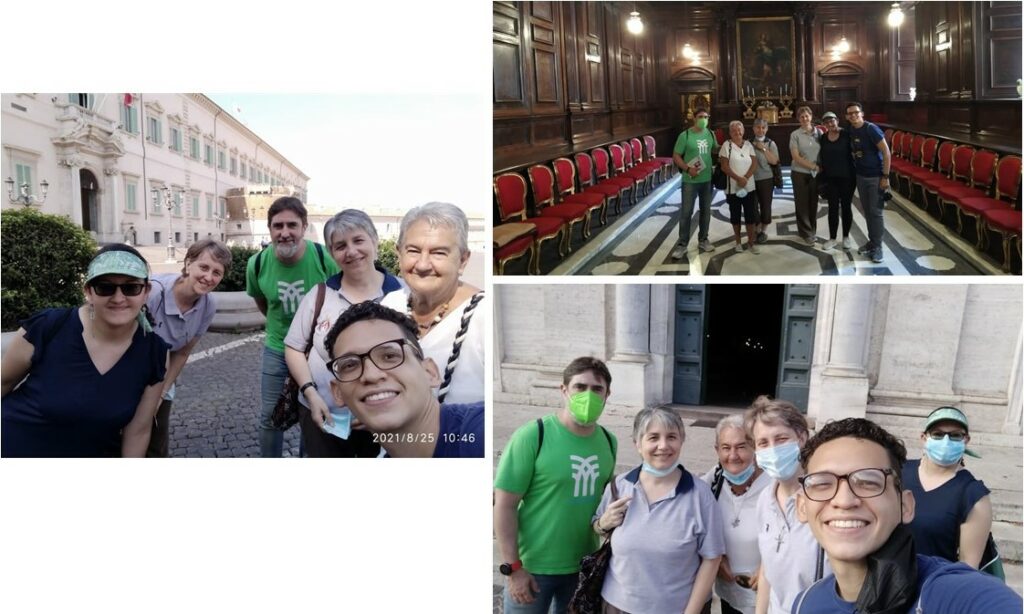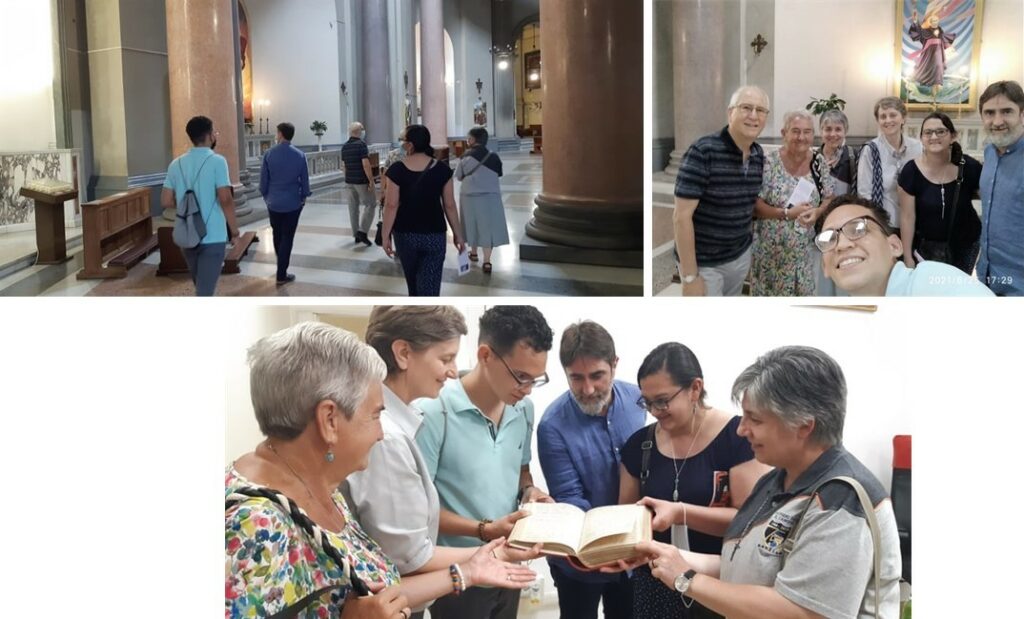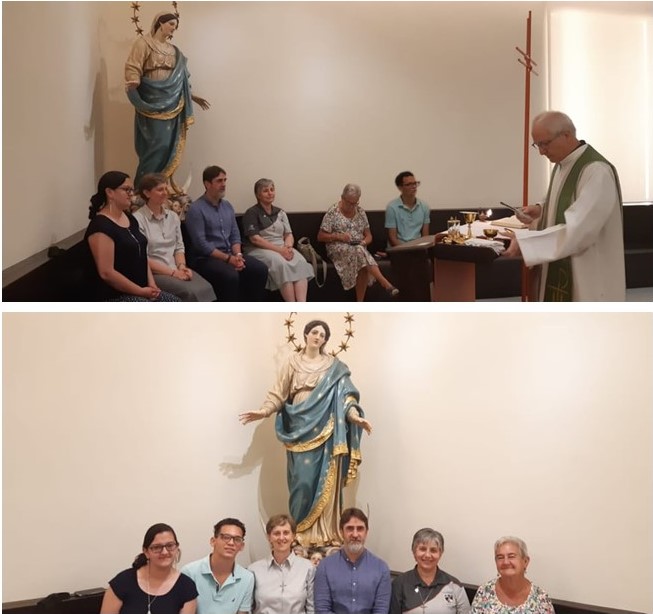
Walking Together
26 August 2021Within the week of work we have in the Walking Together Commission, today has been a very special day of celebration.
On August 25, 1855 the Decree of Foundation of the Religious of Mary Immaculate Claretian Missionary Sisters was signed in Santiago de Cuba. And our sisters Ana María and Priscilla, have offered us to do in Rome, where we are, the “route of Claret in Rome”.
At 7:30 we were already on the street to follow the same route that Claret had travelled in this beautiful city.
Many places demanded our attention; we divided the explanation of each of them, although we did not intend to cover all of them, but we shared some of the most significant ones:
We begin at Porta Cavalleggeri, through which Claret entered Rome on October 6, 1839 to respond to his vocation: “to present myself to the Congregation of Propaganda Fide so that it could send me anywhere in the world”.
We went on to St. Peter’s Basilica, where the First Vatican Council was held, in which Fr. Claret took part, and we prayed for a moment in front of the mosaic that commemorates his figure.
Then, in the church of Santa Maria in Traspontina, we remembered that he went there in search of a Spanish-speaking religious with whom he could talk about his missionary desires when he arrived in Rome.

We passed by the Chiesa Nuova where, after his canonisation, a thanksgiving was celebrated for the Spanish-speaking pilgrims and the Palazzo della Cancelleria, where he went several times for matters related to the constitutions of the Claretian Missionaries and Claretian Missionary Sisters.
We go on to the Quirinale (current seat of the President of the Italian Republic) in whose palace, in Claret’s time, the Popes used to reside and where he had a private audience with Pius IX.
Nearby is the church of Sant’Andrea al Quirinale, a “jewel of the Baroque” which was the novitiate of the Society of Jesus and where Claret entered as a novice for a short time. Saint Francis Borgia, Saint Stanislaus of Kostka and Saint Aloysius Gonzaga also lived there.
Once in Piazza di Spagna we approached the Palace of the Propaganda Fide and seat of the Spanish embassy, where he was also there for documentation.
We recalled with emotion on this pilgrimage-walk his missionary desires that stand out in every place, a clear sign of his vocation as an apostolic missionary. In the afternoon we went to the general curia of the Claretian Missionaries where their superior Vicente Sans explained to us in great detail the great Basilica dedicated to the Heart of Mary and the museum-chapel in honour of Claret; we could see the original of his autobiography and some of his many letters, with great emotion.

We celebrate the Eucharist and Vincente, on this special day, reminds us that María Antonia París says that the important thing is to follow Jesus and that this implies a path like that of the Master, of death and life, like Him who gave Himself up to death on a cross. She also encourages us to make the way easy for others, knowing the Lord and making Him known.

We thank God and the people we have met, for this day full of charismatic experiences, in which the various vocations represented in our Commission, from our own family and from another, participated, but in the end, we realise that there is much more that unites us than differences. It is a sign of the fruitfulness of the gift of charisms for the church and the world.
María Luisa Berzosa – Daughter of Jesus
